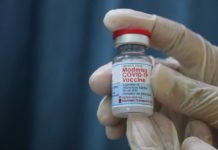As cases of COVID spike higher on land due to the fast-moving Omicron variant, cruise ships appear to be seeing the same trend — despite stringent protocols requiring vaccines, testing, and masking. In fact, the number of cruise ships potentially seeing cases has more than doubled in just days.

Each day, cruise ships operating (or planning to operate) in the United States submit daily health reports to the CDC. Currently, over 100 ships file these daily reports with the health agency.
The CDC then assigns each ship a color status. Green indicates no potential cases. Orange or yellow status means there are possible cases on ships. Red indicates sustained transmission of the virus.
What Color Status Means
To date, no ship has received a red rating as the new protocols — while not completely able to keep cases off ships — have limit spread. However, there have been a number of orange or yellow-status ships.
Orange status is given when a ship in service has possible cases of COVID or COVID-like illness totaling less than 0.10% of passengers and no crew members. If the ship has crew only, then cases are less than 1% of crew members.
Yellow status has been much more common. It is given when cases for in-service ships total more than 0.10% of passengers, or one or more crew cases are found. If sailing with crew only, then cases reported total more than 1% of crew. Failing to submit a daily report on time to the CDC also gives yellow status.
Status Correlates With Cases on Land
Color status is updated each weekday, based on results during the past week. While the CDC only publishes the color status for the last day, we’ve kept track of this data going back to August to be able to follow trends. (See our latest update here.)
In general, the numbers correlate with cases on land. During the recent summer wave in Delta cases, the number of cruise ships with orange or yellow status also rose, peaking above 50%.
Then, as with cases on land, the percentage of ships showing possible cases declined. Now, that’s reversing quickly in the sharpest move we’ve seen.
Data from December 13 showed roughly 24% of ships having orange or yellow status. One week later on December 20, nearly 55% of ships were those colors.
In absolute numbers, just 26 ships were yellow or orange one week ago. Now, 59 ships have that status. That’s 33 more in just one week.

There are a couple of things to keep in mind. First, the CDC does not release specific case numbers with the color status. So for instance, yellow status can be given for as little as one crew member having a positive test. We have no idea how many cases the change in color status actually represents.
As well, there are no details released regarding variants. However, given the fast rise on land of Omicron cases, which coincides with the steep rise in impacted ships, it seems likely that the variant is in play.
Updating Protocols in Response

The rise in “non-green” ships comes on the heels of spiking cases in many parts of the world and notable cases found on ships.
First, countries from South Africa to the United Kingdom to the United States have seen a sharp spike in cases due to Omicron. The variant is said to be faster spreading and better able to evade vaccines. And while there are hopeful signs it may cause more mild illness, that’s not confirmed.
Meanwhile, there have also been notable outbreaks on ships in recent weeks. First, Norwegian Breakaway saw a total of 17 cases according to the Louisiana Department of Health. Among those cases was at least one probable case of Omicron.
Additionally, 48 people aboard Symphony of the Seas tested positive on a recent cruise from Miami despite most being vaccinated.
To be sure, cruise lines are not taking the rise in Omicron laying down. Already major lines have implemented masking rules for passengers in indoor areas — even if they are vaccinated.
Norwegian Cruise Lines has also extended its policy of testing all passengers at the terminal before boarding through January 2022. This policy was already in place, but was set to end sooner. (Passengers would have still been required to have their own negative test within two days of boarding from a U.S. port.)
In addition, given the spike we wouldn’t be surprised to see more protocols strengthened across lines. For instance, this might mean universal testing at the pier before boarding for all cruises, a requirement for booster shots before sailing, or other measures designed to keep cases off the ship and limit any potential spread.
During a recent conference call to update investors, Carnival Corporation CEO Arnold Donald sounded confident his company was up to the challenge of a new variant.
“We have very effective protocols,” Donald said in response to a question about the impact of Omicron. “And so again, I think our actual performance and we had these protocols in place as you will recall, even before there were vaccines we had effective protocols with sailings in Europe. So we’re among the safest form of socializing and travel that, that there are.”
For now at least, it’s clear that cruise lines are seeing a big spike in potential cases on ships that is hopefully short lived.












